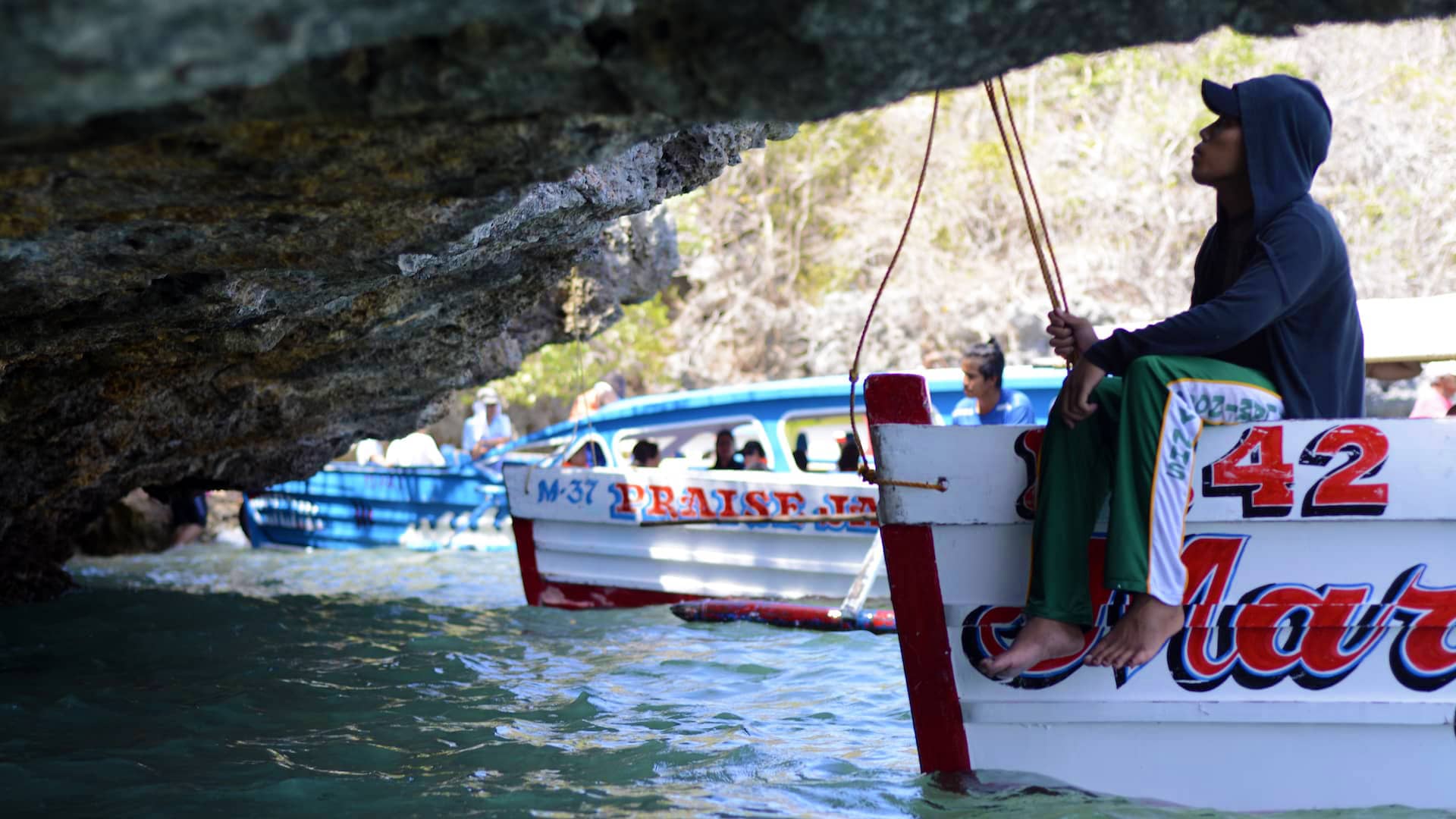The Hundred Islands National Park collectively comprises these 123 limestone islands most of which are clad in lush vegetation, secret coves, strips of white sandy beaches and sandbars as well as giant clams snorkeling areas amidst largely tranquil waters with gorgeous views of the South China Sea.
The islands is believed to be at least about 2 million years old were part of an ancient coral area that extends well inland, a large area that used to be part an ancient sea. When the sea levels lowered, the islands were exposed, whilst hundreds of thousands of years slowly eroded the base of these islands invariably forming mushroom umbrella shapes in the middle of stunning emerald waters.








Out of the many islands, only three were developed for tourism and the most well developed is Quezon Island which is actually composed of three islets and includes dining pavilions, a grilling area, restrooms, nipa huts, a small white sandbar, and a giant clam garden. Quezon Island was named after the former Philippine Commonwealth President Manuel L. Quezon, whose statue we saw on one of the islets. Quezon Island is probably one of the most visited in the National Park.















Another well developed island would be the Governor’s Island which also doubled as the site for the Philippine version of the reality show Big Brother. The island, one of the three most visited in the National Park has a short stretch of white sand beach, a small cave that is home to bats and swiftlets and a view deck which offers beautiful views of the islands of the National Park.





Lucap Wharf is the jump off point to the Hundred Islands, and although at first there would be a bevy of people swarming around you offering boat rides but don’t worry as it’s not as bad as it sounds. Make your way to the Tourism Information Center for your registration and pay your entrance fees and parking fees when applicable and make sure you get your official receipt because this will be required when visiting the islands.






Aside from having a picnic or just sunbathing on most of the islands, one can also snorkel or dive and see the Giant Clams which are under the auspices of the University of the Philippines Marine Science Institute based in Bolinao. The area is now being patrolled regularly and strategic partnerships with the University of the Philippines and other stakeholders in the area were formed to rehabilitate the islands and its once rich marine grounds.

Leave a Reply